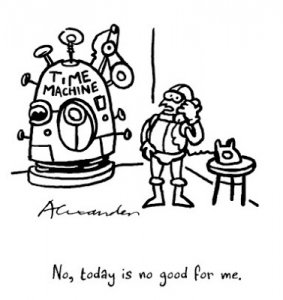Ahhh...the good ol' days. :sentimental:
Remembering What a Buck Could Buy in the 1960s
A dollar really went far in the 1960s — much farther than it does today. Before you get too nostalgic, remember that the median household income in 1967 was $7,143, and the minimum wage was $1.40 per hour. Of course, on the other hand, that same year, an average American home cost $24,600, and a Love Bug (a Volkswagen Beetle) could be had for a mere $1,500.
Three gallons of gas
Back in the'60s, people pulled up to the gas pump and actually said to the attendant, "Gimme a dollar's worth." In 1965, this amount could get you quite far, because gas was only 31 cents a gallon (it was up to 35 cents by 1969). To make sure your car would always start, you could get jumper cables for a buck and if you wanted to keep your ride looking great, you could buy car wax for a mere 99 cents.
20 First-Class Postage Stamps
In 1963, you could send letters to 20 friends for $1, or if you didn't have a whole lot to say, you could send 25 postcards. But by 1968, prices went up — it cost 5 cents to send a postcard and 6 cents to send a letter.
A hamburger with fries, salad, and dessert
Actually, in 1965 you could score a meal with a double-decker burger for a buck! If you wanted to go out to dinner, you could eat at Oscar's (a family restaurant chain in California), and for $1 you'd get a double-decker hamburger with French fries, salad, and ice cream for dessert. For only 30 cents more, you could get a complete fried chicken or shrimp dinner (also with fries and salad). Pie was only 35 cents a slice, an ice-cream sundae was 40 cents, and coffee or a soft drink cost 10 cents. By the way, if you wanted to grab a quick bite at a lunch counter, you could get a hot dog and a coke for 49 cents.
A gallon of milk (and other groceries)
In 1965 you could get a few food items for close to $1, but for the most part, the things you'd need to buy cost quite a bit less. So fill your vintage shopping cart with these items:
- Gallon of milk: 95 cents
- One regular size bottle of Heinz ketchup: 22 cents
- One dozen eggs: 53 cents
- One-ounce Hershey bar: 5 cents (Although the price remained the same, the size of the bar shrunk to 7/8 ounce in 1966 and 3/4 oz in 1968.)
- Pillsbury cake mix: 25 cents
- Pound of pork chops: $1.03
- Pound of sirloin steak: 85 cents
- Six-pack of Pepsi: 59 cents
Ten razor blades (and other toiletries)
Then as now, Americans wanted to look their best. Here's what you'd have to part with to do just that in 1965:
- Package of ten Gillette razor blades: 99 cents
- Can of shaving cream: 59 cents
- Tube of toothpaste: 55 cents
- Can of hair spray: 47 cents
- Revlon lipstick: $1.25
- Revlon nail enamel: 75 cents for crème and 90 cents for frosted
Enough aspirin for 50 headaches (and other meds)
Got a headache? In 1965, you could get 100 aspirin for only $1. You could also stock your medicine cabinet on the cheap with these other meds:
- Generic cold relief capsules: 60 cents for two packages of 12
- Cough drops: 23 cents for three packages
- Cough syrup: 59 cents for a bottle
- Contact decongestant tablets: 77 cents for a package of ten
Numerous copies of your favorite magazine or newspaper
In 1965, if you wanted a good dose of the printed news, you could get the New York Times for 10 cents from Monday through Saturday, but you'd need to spend 30 cents for the Sunday edition. If you were into the local news, you'd spend a bit less: The Daily Record, a newspaper in Morristown, New Jersey, sold for 7 cents. For another view of the world, you could get a copy of Life magazine, Time magazine, or Sports Illustrated for 35 cents.
A paper dress (for you, not a doll)
The mid-'60s gave rise to a new fad for a disposable society — paper clothing. As a promotion, in 1966 the Scott Paper Company sold paper dresses for only $1.25, and they sold like hotcakes! Just think — if the dress was too long, you could have a minidress just by using a pair of scissors. However, these dresses were just as expensive to produce as regular dresses, which sold for quite a bit more, so the fad quickly died out.
A home decoration or two
Most home decor items cost more than $1, but you might like to know what it cost to do a little redecorating in 1965. You could buy a sheet for $1.76, two bedspreads for $5, a lamp for $1 (or you could spend up to $5 if you wanted to splurge), and Oneida dinnerware for $3.98–5.40 per place setting.
A six-pack of beer
The best news of all . . . you could get a six-pack of your average American beer for just 99 cents!
http://www.dummies.com/how-to/content/remembering-what-a-buck-could-buy-in-the-1960s.html


